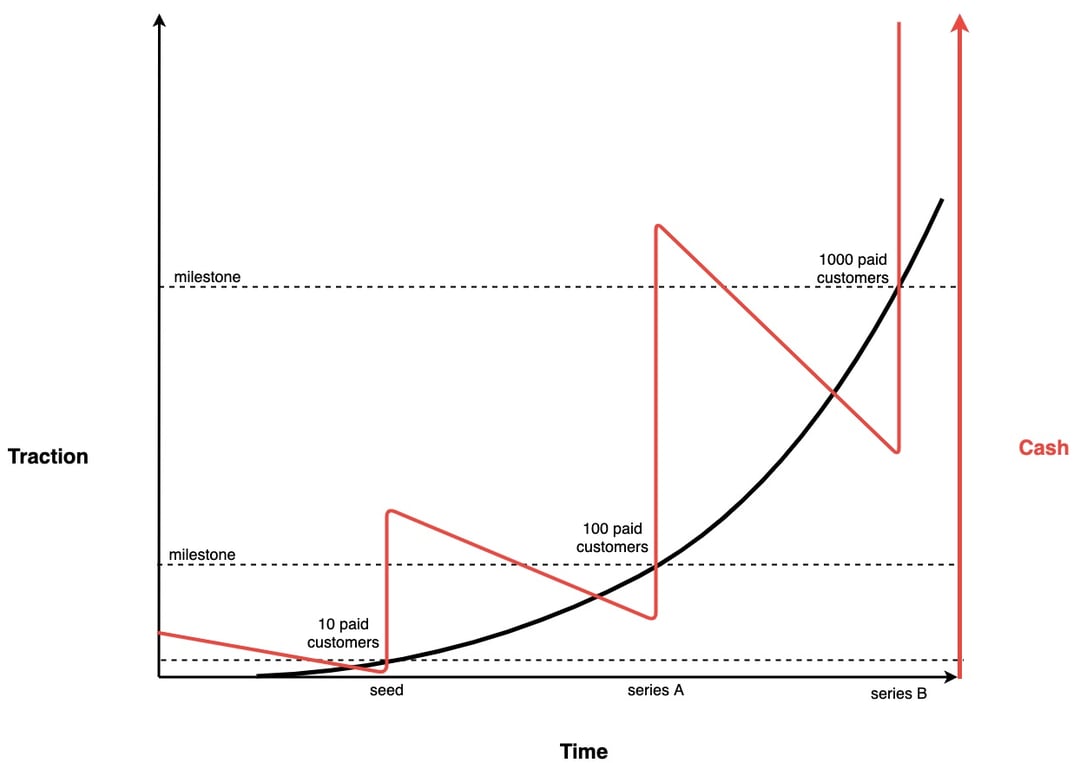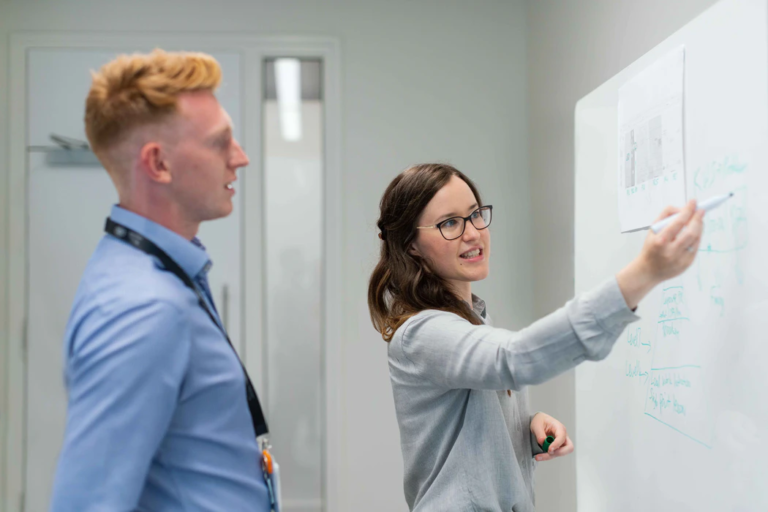The CTO's Role in Implementing Lean Startup Methodology

This is the fifth and last blog in our Lean Startup Methodology blog series. In this blog series we go over Lean Startup Methodology principles and show how these principles help startup founders tackle a variety of risks they face in each step of their startup journey. In the first blog we started with defining what a startup is, and what the steps defined in the lean startup methodology are.
In the second blog we listed different types of risks a startup faces and how the lean startup methodology can help overcome them.
In the third blog, we discussed the problem risk, how founders should focus on solving the biggest problems their customers have first, and why it is so important to validate the problem, by validating customers and interviewing them. Also, It is important to focus on “early adopters” in early stages to reduce the market risk.
In our previous blog, we focused on why it is so important to validate solutions as soon as possible. In this blog we emphasize on the role of the company CTO in implementing Lean Startup Methodology, more specifically in implementing the Minimum Viable Product (MVP) and validating solutions.
First, the CTO plays the central role in defining the MVP. Because they are part of the executive team, there is a need for good understanding between the CTO and the CEO on the direction of any project. A typical conversation between CTO and CEO may go as follows:
- CEO: How much does it cost to build solution X?
- CTO: What problem are you solving with solution X?
- CEO: We are solving the problem of … for …
- CTO: How about solution Y which solves the exact same problem with a lower cost in less time?
Coming to a mutual understanding between leaders is the way to bring the project under one vision. As the main technology advisor in a business, the CTO works closely with the CEO in implementing the mission. They are working constantly to ensure that customer’s needs are met, and that there are constant improvements to the product offerings.
Deploy Your MVP Fast
Within a lean startup, a CTO begins facilitating the process by entering the Lean Startup cycle (build, measure, learn) with a testable MVP. The CTO aims to put this product in front of real customers as fast as possible. At this early stage, the deployed solution should give the startup feedback as much as solving problems for the customer. Gathering data on how users interact with the product is key.
A common misconception is that the solution needs to be a self-serve product to be fundable. This is wrong. Smart investors invest in the vision of a validated product, not necessarily a polished product. As long as manually operated processes in the business can be reduced/optimized to reach profitability and scale in the future, it’s fundable.
A founder’s responsibility is then to re-evaluate repeatedly and objectively, after gathering feedback. If your solution is not directly solving the problem at hand, proceed to fix the solution. Validation of a solution applies to any aspect and at any stage of a startup. Whether approaching an angel investor, venture capitalist or other source of funding, startups get funded by selling “validated solutions” to investors, not ideas, or products.
Funding an MVP
Which one of these conversations makes more sense? Let’s compare.
Version 1:
Founder: I have this fantastic idea!
Investor: How do you know customers will pay for it?
Founder: I don’t, that’s why I need the money: to test it.
Version 2:
Founder: I have this fantastic idea!
Investor: How do you know customers will pay for it?
Founder: Without spending too much time and money (experiments), I have validated that it solves a big enough problem for customers that they will pay for it and here is proof that we already have traction.

As a founder when you find yourself in fundraising mode, your goal is to optimize your solution for maximum success. This graph (above) shows that with each milestone in the project, there should be a natural increase in traction, and this can be accomplished in incremental steps. Your first 10 paid customers are potentially a milestone that can be reached with initial seed funds, then the next 100, and more with each milestone.
By using lean startup methodology, you defer costs as much as possible in early stages. Don’t worry too much about what matters AFTER the next round of funding, you will have significantly more resources to address it then. The important thing is to focus on the current cycle, keeping in mind your post-funding-cycle transition plans. Implement the transition only when needed to attract more customers.
Scalability by Automation
With lean computing, scalability is not an issue until you cannot answer your customers with just one computer instance. Let’s say that you want 16 x large instances on Amazon’s EC2. That’s usually millions of requests per day and thousands of active users. When the right time comes, your CTO plans for operations automation. The CTO calculates the cost of manual operation vs. automation: Here’s an estimation example:
- 30 minutes of developer time used per release
- Estimated 100 releases till the next round of funding
- $50/hr Developer salary → $2500
- Cost of automation: 10 hours = $500 → then automate it
Another example:
- Time used to bring back the server: 2 hours
- Developer’s hourly salary: $50/hr
- Expected crashes: twice till next round of funding (based on historical data and load prediction)
- Time spent generating a quarterly report manually: 2 hours
- Expected number of reports needed till next round of funding: 4
- Manual operation cost: $600
- Cost of automating and integrating with a dashboard for 40 hours = $2000 → then do not automate it.
Bottom line is, avoid investing the precious seed money for an ROI (return on investment) expected 20 quarters in the future. An ROI that adds up to a two-year investment in a technology/improvement in a startup is generally a bad investment. Normally aim for much less in the early stages.
Evaluate
When running a lean, the CTO only considers improving the process if a problem might affect the next funding round. The reliability of the solutions for example, could measure at 99.9% uptime or 99.99% with improvement. In this case does it really make any difference to improve it?
The CTO has to answer this question. Until the next round of funding, can the company lose (or be unable to acquire new clients) because of poor performance? In that case, the CTO makes sure the company does not do anything that would make the improvement excessively expensive and schedules it for after the next round.
Concerning infrastructure, it may be useful to also evaluate whether the cost of moving the solution to a low-level solution (e.g. Heroku to AWS) has a better return on investment. This kind of ROI evaluation can also be done based on time till the next round of funding. Uptime monitoring has little cost and enough value to be considered from the beginning. Similarly, logging and error reporting generally have quick ROI by reducing disaster recovery time.

Product Design
When building the MVP, use wireframes. Normally you can avoid confusion about what the product is, its cost and rebuilding. User interface designs (UI) may not give clarity on the product. Pixel perfect UI normally has little impact on early customer acquisition. Pick a nice bootstrap theme instead: https://themeforest.net/search/react%20bootstrap.
Develop Your MVP
NuBinary is a Toronto-based technology firm offering fractional CTO, product development, and Venture Jumpstart services. What is Venture Jumpstart? Through this program, you can benefit from an advisory and consulting service to help you build your technology product more effectively. Building a successful tech product is more than writing well-written code. As discussed through our Lean Startup blogs, it also includes:
- Product Development Process: Proper market positioning and commercialization.
- Competitive Analysis: Analysis of the competitors’ underlying technology and strength.
- Go-to-market strategy: Planning for pilot and alpha/beta testing. Creating reasonable traction for validation of product and technology.
- Positioning for dilutive and non-dilutive funds: Development process to minimize the risk and maximize the value that would unlock relevant grants and investment opportunities.
Contact us:
Learn more about how Nubinary can help your startup come to market through our Fractional CTO service, product development and more. Visit https://nubinary.com/work-with-us.



